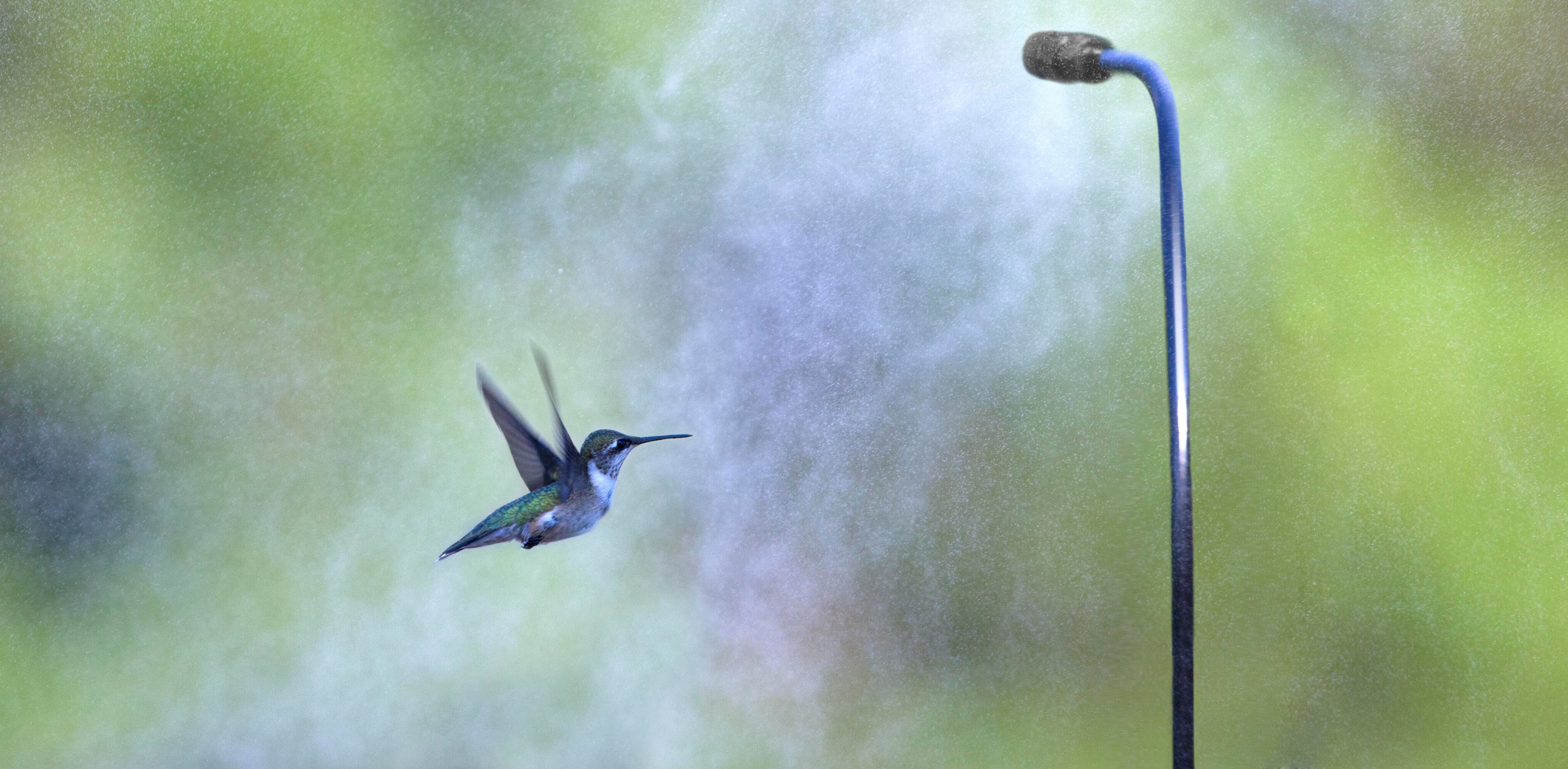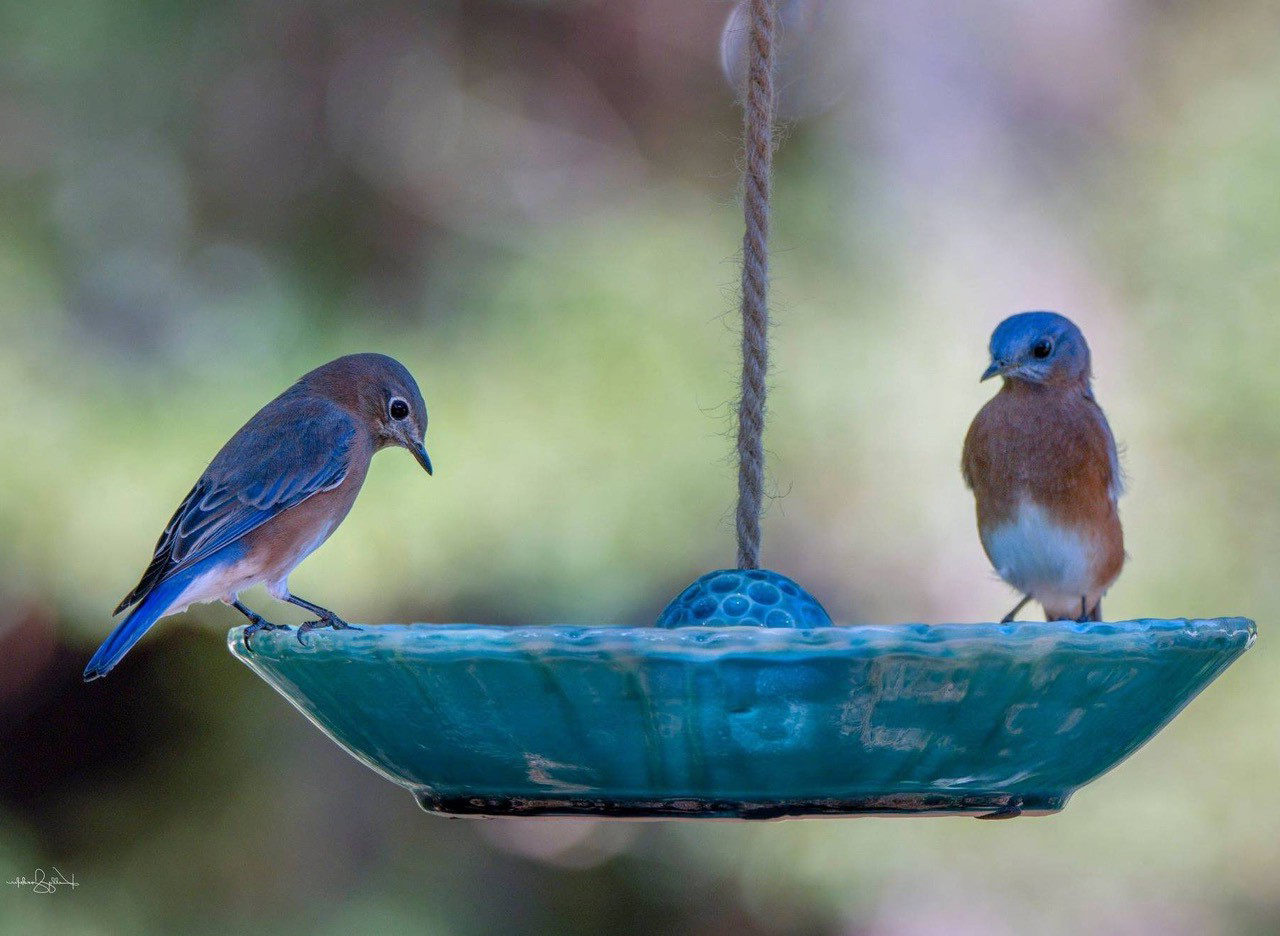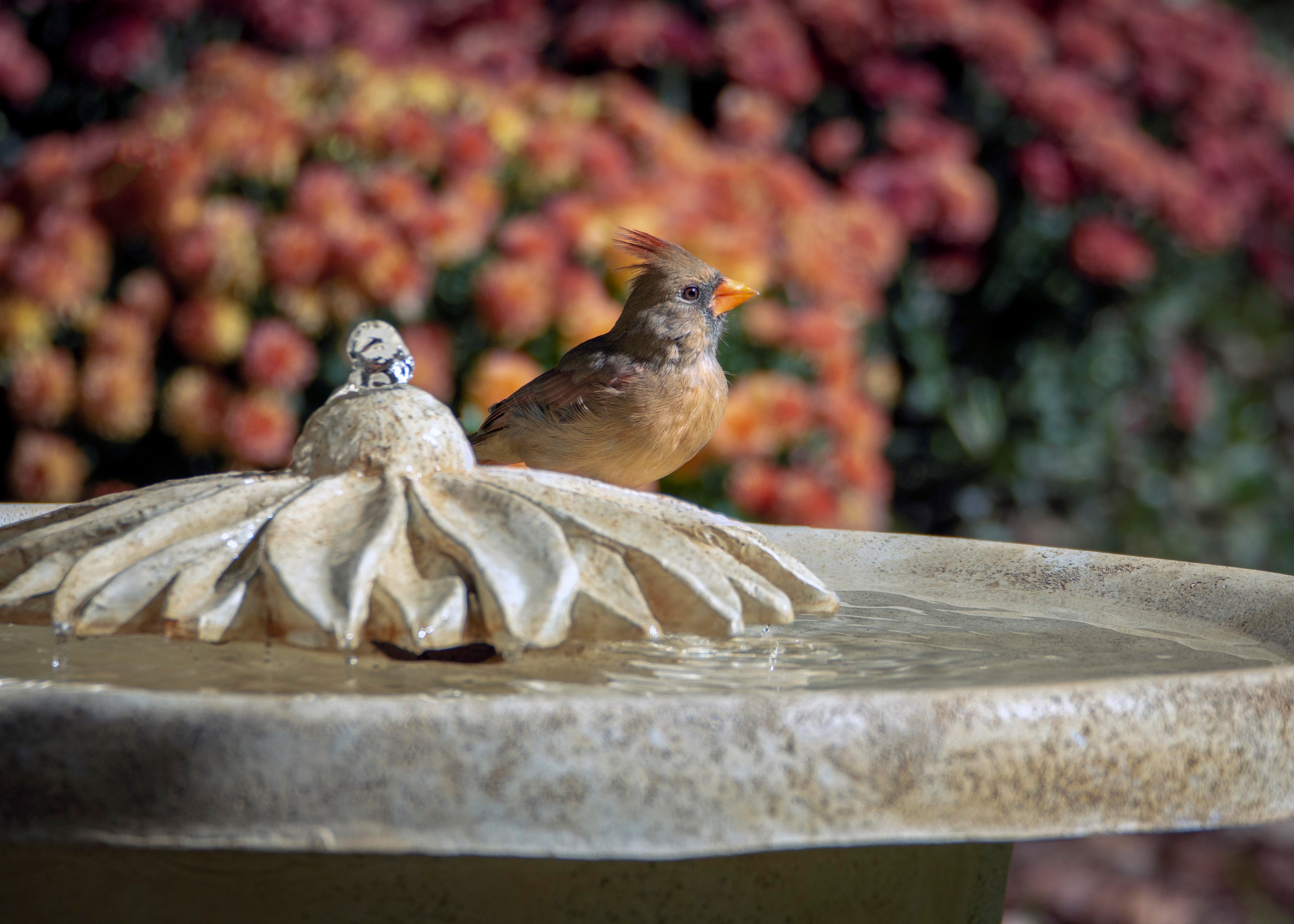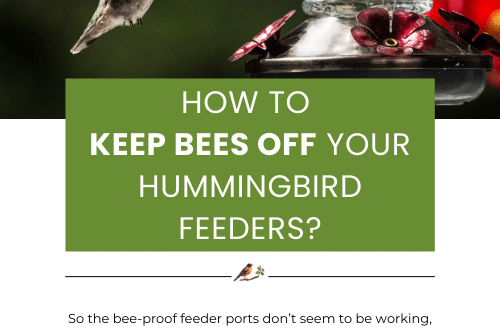-
Convert Baths into heated bird baths in winter
 As if it’s not hot enough outside, here’s one on heated bird baths.
As if it’s not hot enough outside, here’s one on heated bird baths.Most of the newer materials used today for bird baths will accommodate heaters, converting them to heated bird baths. True, that in the dead of summer, nobody is really thinking about wild birds in winter, but this precious resource is sometimes scarce for our feathered friends.
A fresh water source is a necessity for birds year-round, and Mother Nature can be just as brutal in winter as she is in sweltering summer months.
Accessories like bird bath drippers and water wigglers keep bath water from becoming stagna
 nt. They actually help keep water fresher by constant movement. This movement is also a visual magnet for birds! Take one cool bird bath, like this deck-mount mode above, and change accessories with seasons for maximum wild bird attraction!
nt. They actually help keep water fresher by constant movement. This movement is also a visual magnet for birds! Take one cool bird bath, like this deck-mount mode above, and change accessories with seasons for maximum wild bird attraction! -
tiny ports on hummingbird feeders… an easy clean
 Whether traditional tube style, or basin style, all hummingbird feeders have one thing in common…very tiny feeding ports! These tiny ports tend to build up a “black mold” during summer’s extreme temperatures. Rinsing hummingbird feeders with hot water does not always remove this gunk. Sugar water gets very nasty, even fermenting within just a few days. Hummingbirds will rarely re-visit a feeder that has bad nectar.
Whether traditional tube style, or basin style, all hummingbird feeders have one thing in common…very tiny feeding ports! These tiny ports tend to build up a “black mold” during summer’s extreme temperatures. Rinsing hummingbird feeders with hot water does not always remove this gunk. Sugar water gets very nasty, even fermenting within just a few days. Hummingbirds will rarely re-visit a feeder that has bad nectar.To keep your little sprites happy and keep them around for the season, squeaky clean hummingbird feeders and fresh nectar are essential. So just how do you clean those itty-bitty feeding ports? The secret weapon is an old mascara brush! Before tossing your next (or grab your wife’s) mascara, save the brush and run it through the dishwasher to remove all the makeup and residue. These make the perfect cleaning brush for feeder ports on any tube style hummingbird feeders, and basin styles as well.

By the way, if you’re still buying commercial nectar… it’s time to try and make your own. The recipe is so very simple and it takes less than five minutes. Our hummingbirds prefer the plain sugar water, and once we started feeding it, there was a dramatic increase in visitors who stuck around the entire season.
So here’s the recipe to the stuff to fill your hummingbird feeders with: one cup plain table sugar to four cups water. That’s it! Nothing else in the mixture as it will harm or kill hummingbirds. No need to boil the water either, microorganisms are spread through the bird’s bills… not the feeders or nectar. We do boil one cup of water, simply to dissolve the sugar quicker and more effectively. You can then store unused nectar in the fridge for up to two weeks.
So this season, save the mascara brush and try your own nectar!
-
KEEP YOUR PETS SAFE THIS 4TH OF JULY (AND ALL SUMMER LONG)
SEAACA Provides Smart and Practical Tips to Help Beloved Animals Stay Safe During the Festive Summer Holiday
LOS ANGELES (June 27, 2011) – SEAACA (Southeast Area Animal Control Authority; www.seaaca.org) has released a helpful list of tips for pet owners to keep their beloved animals safe this 4th of July. The fireworks extravaganzas and daylong celebrations are summer highlights, but they also pose serious problems and threats to dogs and other pets. With the holiday just around the corner, here is some smart and practical advice from SEAACA for the upcoming holiday and all summer long:1. Beware of fireworks. Fireworks are no blast for some pets, with many cats and dogs becoming easily frightened by the deafening roar of rockets bursting in air. The best option is to leave your cat or dog indoors (not leashed in the yard) during the holiday weekend (July 1-4) in a safe, secure, escape-proof room of the house with comfy bed, food and water. Also consider leaving a TV or radio on to drown out the sound of the fireworks and to provide familiar noises while you’re out.
2. Confirm your pet’s collar and I.D. information. Dogs and other pets can become easily frightened by loud celebrations on the 4th of July. Make sure your pet is wearing a properly fitted collar with correct identification and tags just in case he or she becomes scared and runs away from home. Micro-chipping also is a great precaution to make it easier for your pet to be returned home safely and promptly.
3. Be careful with 4th of July decorations. Remember that your pet may easily mistake your red, white and blue decorations and glow sticks as chew toys; cats can even become tangled in streamers and ribbon. Make sure to pet-proof your home and keep fun decorations out of a paw’s reach.
4.. Call your vet. If you think your pet needs to be sedated or tranquilized to handle the fireworks noise and celebrations, contact your animal care provider.
5. Watch the alcohol. Alcoholic beverages have the potential to poison pets; never leave your beverage unattended. If alcohol is ingested, your pet could become very intoxicated and weak, severely depressed, and could go into a coma or worse.
6. No picnic table and grill scraps. Always be aware of what friends and family are sneaking to your dog under the table. While tempting on such a festive occasion, human food (bones, onions, avocado, grapes and raisins) should be off limits at all times to your dog. Some human food may be toxic or dangerous if ingested and cause stomach upset.
7. Never leave animals tethered or chained outside. Pets can injure or hang themselves if they jump around or leap over a fence while trying to run from the noises. Cats should stay indoors.
8. Never leave pets in unattended parked car. Partially opened windows on hot days do not provide sufficient airflow and also can put your pet in jeopardy of being stolen.
9. Stay in the shade. Like humans, dogs and other pets can suffer from heatstroke. Keep your pets in shaded areas on very hot and warm days.
10. Stay hydrated! Dehydration is the #1 concern and danger during those long summer heat waves. Make sure you have a generous amount of fresh water on hand to quench your dog’s thirst.“We all love the 4th of July and our country’s independence celebrations, but it can be a rough time for cats, dogs and other pets,” noted SEAACA Executive Director, Dan Morrison. “With a few simply precautions, we can make it safe for every animal and celebrate without worry,” he added.For more information about SEAACA, please visit www.seaaca.org.About SEAACASEAACA (Southeast Area Animal Control Authority) provides animal care and control services for 14 cities in southeast Los Angeles County and northern Orange County, including Bell Gardens, Bellflower, Buena Park, Downey, Lakewood, La Palma, Montebello, Norwalk, Paramount, Pico Rivera, Santa Fe Springs, South El Monte, South Gate and Vernon. SEAACA’s Animal Care Center located in Downey reunites pet owners with lost pets and assists new pet owners with pet adoptions. SEAACA’s Animal Wellness Clinic, also located in Downey, spays and neuters all adoption animals plus provides vaccinations and micro-chipping to the general public. For more information about SEAACA, please visit www.seaaca.org.
Hummingbird Feeders
about feeders & accessories




